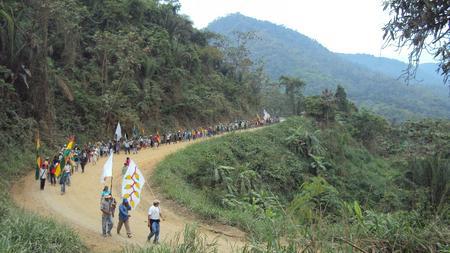The Bolivian TIPNIS March—In Photos
Thursday, November 3, 2011
On October 21, Bolivian President Evo Morales announced an agreement to scrap a controversial plan to build a highway through the TIPNIS Amazonian ecological reserve. The president’s decision came just two days after over 1,000 indigenous protesters from the TIPNIS region arrived to the Bolivian capital, La Paz, after marching 370 miles against the highway project. For the indigenous marchers, Morales’s announcement was even more victorious, coming less than a month after Bolivian riot police tried to violently break up the march near the Bolivian town of Yucumo on 25 September.
The march began on August 15 in the Bolivian lowland city of Trinidad, and was led by the Confederation of Bolivian Indigenous Peoples (CIDOB) and the National Council of Ayllus and Markas of Qullasuyu (CONAMAQ), who demanded their right to be consulted over the road construction. Such prior consultation, they say, is enshrined in the new 2009 Bolivian Constitution and international treaties, including the International Labor Organization’s Convention 169 and the UN Declaration on the Rights of Indigenous Peoples—both ratified by Bolivia.
Despite its discourse in support of the indigenous right to prior consultation, the Bolivian government failed to consult the TIPNIS communities before signing a contract with the Brazilian company Construtora OAS in 2008 to build the road, and before beginning construction on the road this year. President Evo Morales, at the time, claimed the road was vital for national integration and development. The indigenous marchers argued that a road through TIPNIS would threaten their existence and the way of life of future generations. Indigenous marchers have always said they are in favor of a road that does not go through TIPNIS.
This photo essay is a look at some of the defining moments of the two-month-long TIPNIS march, from Trinidad to La Paz; from resistance to victory.










